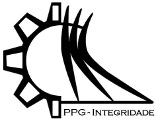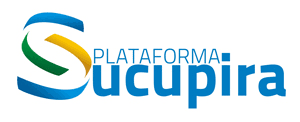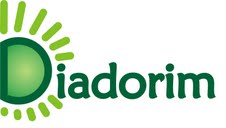Comparative study of the colorimetric method with sodium rhodizonate and use of a technique developed with atomic emission spectroscopy with inductively coupled plasma in the identification of GSR
Keywords:
balística forense; CP-OES; armas de fogo; rodizonato de sódioAbstract
With the high rate of crimes involving the use of firearms it is increasing every day. With the high demand for cases, the need to develop faster and more effective methods is incidental in order to improve the work of the forensic community. The objective of the study is to identify the lead (Pb), barium (Ba) and antimony (Sb) residues, obtained by firing guns from a .380 semi-automatic pistol and a .38 revolver, using an analytical method developed at from studies, in spectroscopy of atomic emission with inductively coupled plasma (ICP-OES), and compare the results with the current colorimetric method, using sodium rhodizonate. For the evaluation of the results, previously 1 and 2 shots were taken, collected with and without hygiene and later analyzed. The colorimetric method has low sensitivity and detects only one of the three characteristic metals, while the ICP-OES is a sensitive, fast and inexpensive technique, being able to perform accurate readings through the optimization of the equipment configurations. It is noteworthy that for the analysis in ICP-OES, a swab embedded in 1% HNO3 was used, while for colorimetric evaluation, only the swab was used as such. The rhodizonate method proved to be flawed, while via spectroscopy promising results were obtained. In general, the study was promising because it identified the fastest and most efficient method, with the possibility of being carried out, for possible validation of the new technique, in order to use it effectively in the routine of expert analyzes.
References
CHEMELLO, Emiliano. Ciência forense: Balística. Química Virtual. Caxias do Sul, 10 f., fev. 2007. Disponível em: < http://www.quimica.net/emiliano/artigos/2007fev_forense3.pdf>. Acesso em: Acesso em: 18 fev. 2019
FREITAS, João Carlos Dias de. Identificação de assinaturas químicas em resíduos de disparo de arma de fogo em diferentes alvos. 2010. 74 f., Dissertação (Mestrado em Ciências e Tecnologia Nuclear - Materiais) ”“ São Paulo, Universidade de São Paulo. Disponível em: <http://www.teses.usp.br/teses/disponiveis/85/85134/tde-15092011-151017/>Acesso em 17 mar. 2019.
GARRIDO, Rodrigo Grazinoli; GIOVANELLI, Alexandre. Criminalística: origem, desenvolvimento e decadência. In: CONGRESSO DE HISTÓRIA DAS CIÊNCIAS E DAS TÉCNICAS E EPISTEMOLOGIA. 1, 2008, Vitória da Conquista. Cadernos de Ciências Sociais Aplicadas, UFRJ/HCTE, 2008, p. 43-60. Disponível em: <http://www.hcte.ufrj.br/downloads/sh/sh1/Artigos/56.pdf>. Acesso em: 19 fev. 2019.
IGP (Instituto Geral de Perícias ”“ SC). Disponível em: <http://www.igp.sc.gov.br/index.php?option=com_content&view=article&id=75&Itemid=109> Acesso em: 18 mar. 2019.
LUTEN, Rebecca; NEIMKE, Dieter; BARTH, Martin; NIEWOEHNER, Ludwig. Investigating airbone GSR particles by the application of impactor technology. Elsevier. Wiesbaden, v.8, p. 72-81, maio 2018. Disponível em: <https://www.sciencedirect.com/science/article/pii/S246817091730139X > Acesso em: 19 mar. 2019.
MELO, Leônidas Carrijo Azevedo; SILVA, Carlos Alberto. Influência de métodos de digestão e massa de amostras na recuperação de nutrientes em resíduos orgânicos. Química Nova, São Paulo, v. 31, n.3, p. 556-564, 2008. Disponível em: <http://www.scielo.br/pdf/qn/v31n3/a18v31n3.pdf> Acesso em: 03 de out. 2019.
REIS, Edson Luis Tocaia dos; SARKIS, Jorge Eduardo de Souza; RODRIGUES Cláudio; NETO, Oswaldo Negrini; VIEBIG, Sônia. Identificação de resíduos de disparos de armas de fogo por meio da técnica de espectrometria de massas de alta resolução com fonte de plasma indutivo. Química Nova, São Paulo, v. 27, n.3, p. 410-413, 2004. Disponível em: < http://www.scielo.br/scielo.php?pid=S0100-40422004000300009&script=sci_abstract > Acesso em: 23 de mar. de 2019.
SILVA, Maria José; CORTEZ, Juliana; PASQUINI, Celio; HONORATO, Ricardo S.; PAIM, Ana Paula S.; PIMENTEL, Maria Fernanda; Gunshot Residue: Screening Analysis by Laser-Induced Breadown Spectroscopy. SCIELO. Recife, p. 1887-1894, 2009. Disponível em: < http://dx.doi.org/10.1590/S0103-50532009001000017 > Acesso em: 19 fev. 2019.
TARIFA, Anamary. Fast detection and chemical charcterization of gunshot residues by CMV-GC-MS and LIBS. 2015. 170 f. Tese (Doutorado de Filosofia em Química) Florida Internacional University. Miami, 2015. Disponível em: <http://digitalcommons.fiu.edu/cgi/viewcontent.cgi?article=3446&context=etd> Acesso em: 15 mar. 2019.
VANINI, Gabriela. Análise de Resíduos de Disparo de Armas de Fogo (GSR) usando ICP-OES: desenvolvimento de uma nova metodologia analítica. 2014. 98f. Dissertação (Mestrado em Engenharia Química). Universidade Federal do Espírito Santo, Vitória, 2014. Disponível em: < http://repositorio.ufes.br/handle/10/1611>. Acesso em: 18 fev. 2019.
Downloads
Published
Issue
Section
License
Copyright (c) 2021 Revista Interdisciplinar de Pesquisa em Engenharia

This work is licensed under a Creative Commons Attribution-NoDerivatives 4.0 International License.
Given the public access policy of the journal, the use of the published texts is free, with the obligation of recognizing the original authorship and the first publication in this journal. The authors of the published contributions are entirely and exclusively responsible for their contents.
1. The authors authorize the publication of the article in this journal.
2. The authors guarantee that the contribution is original, and take full responsibility for its content in case of impugnation by third parties.
3. The authors guarantee that the contribution is not under evaluation in another journal.
4. The authors keep the copyright and convey to the journal the right of first publication, the work being licensed under a Creative Commons Attribution License-BY.
5. The authors are allowed and stimulated to publicize and distribute their work on-line after the publication in the journal.
6. The authors of the approved works authorize the journal to distribute their content, after publication, for reproduction in content indexes, virtual libraries and similars.
7. The editors reserve the right to make adjustments to the text and to adequate the article to the editorial rules of the journal.









